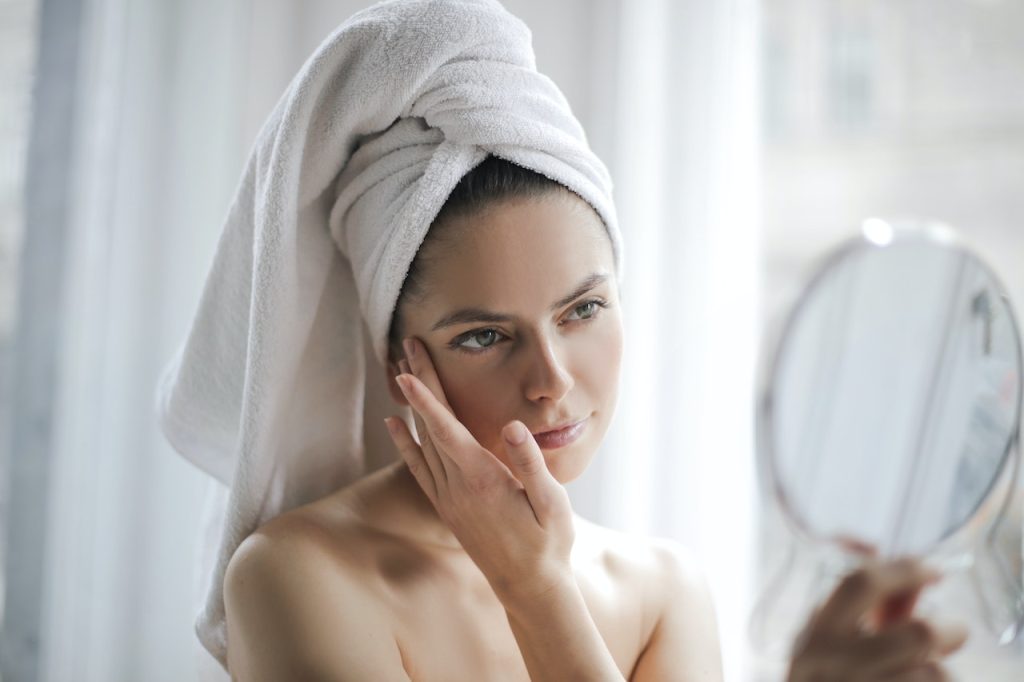As a medical professional and someone who has suffered from acne, I know how distressing having acne can be. And so often, acne is also a double whammy. No sooner have you cured the acne itself; the acne scarring then won’t go away on its own. It can feel very unfair and impact how you feel. But there are ways of treating both acne and acne scarring.
In this blog, we look at the different types of acne and acne scars and how to prevent and treat both conditions to improve skin tone and minimise the risk of problems in the future.

Types Of Acne
There are several types of acne, from mild acne in the form of black or whiteheads to inflamed cystic acne, which causes painful pus-filled bumps. All acne can cause distress and a severe knock to self-esteem, and most types of acne can lead to scarring.
However, cystic acne is usually the cause of the worst acne scars; picking or squeezing is the biggest culprit. Speaking to a medical professional about the proper treatment for your acne while it is active can help prevent scarring. Still, acne scars can also be successfully treated with the right approach.
Types Of Acne Scars And Treatments
Atrophic Scars
Atrophic scars form because the skin cannot create new tissue, leaving shallow skin indentations. There are several types of atrophic scars, including boxcar scars with sharply defined edges, ice pick scars which are wider at the skin’s surface and narrow the deeper they get into the skin, and rolling scars that are caused by bands of scar tissue under the skin.
The best treatment for atrophic scars depends on the type of scarring you have. But the first line of treatment will always be to try and smooth out the surface of the skin. Some of the treatments I might suggest include:
- Microneedling – to cause injury to the skin and improve the texture and tone
- Laser therapy – to remove the outer layer of skin and stimulate the body’s collagen response
- Chemical peels – to slough off the top layer of skin and reveal fresh, smooth skin below
Hypertrophic Scars And Keloids
For better wound healing and reduced scarring, collagen is usually our friend. But sometimes, the body makes too much collagen, resulting in hypertrophic scars and keloids. Hypertrophic scars are thickened areas of skin which appear at the site of an injury; keloid scars are raised skin growths with about 20 times more collagen than common areas of skin.
Both keloid and hypertrophic scars are triggered by injury or trauma and are best treated with laser therapy. Both ablative and non-ablative laser therapy can be used, and I recommend Fraxel®, which treats both the surface of the skin and the deeper layers.

Post Inflammatory Hyperpigmentation (PIH)
Post-inflammatory hyperpigmentation, known as macular scarring by medical professionals, is where there are changes to the colour of the skin following injury or trauma. For example, after being damaged by acne, the skin can develop flat red, pink or brown spots caused by the body producing excess melanin in response to inflammation.
The best treatments for PIH are any which resurface the skin. This might include:
- Chemical peels – to remove the top layer of skin and reveal undamaged skin below.
- Laser therapy – I highly recommend Halo BBL laser, which stimulates the growth of new healthy skin cells.
- Microneedling – to stimulate the production of collagen and fade dark spots.
- Medical-grade skincare products – including prescription-strength retinol- can lighten the skin and reduce the appearance of PIH.
All skin is different, and it’s essential to get specialist advice about your acne and scarring to ensure the proper treatment for your condition, as it can be complex. You don’t have to live with acne or scarring.
Find a medical practitioner that can help you with the treatment for acne scarring. They will consult you to find the best skin acne treatment.